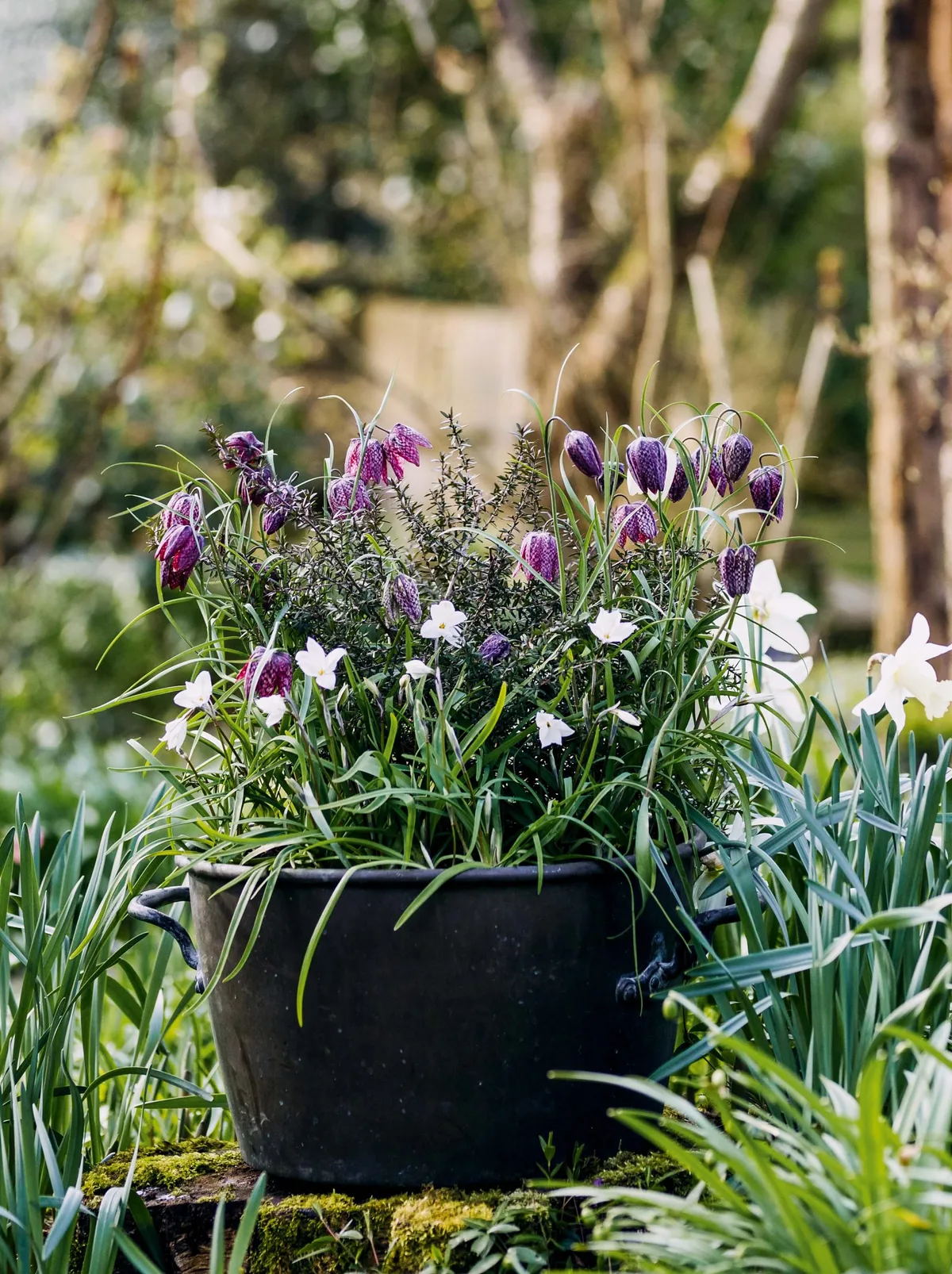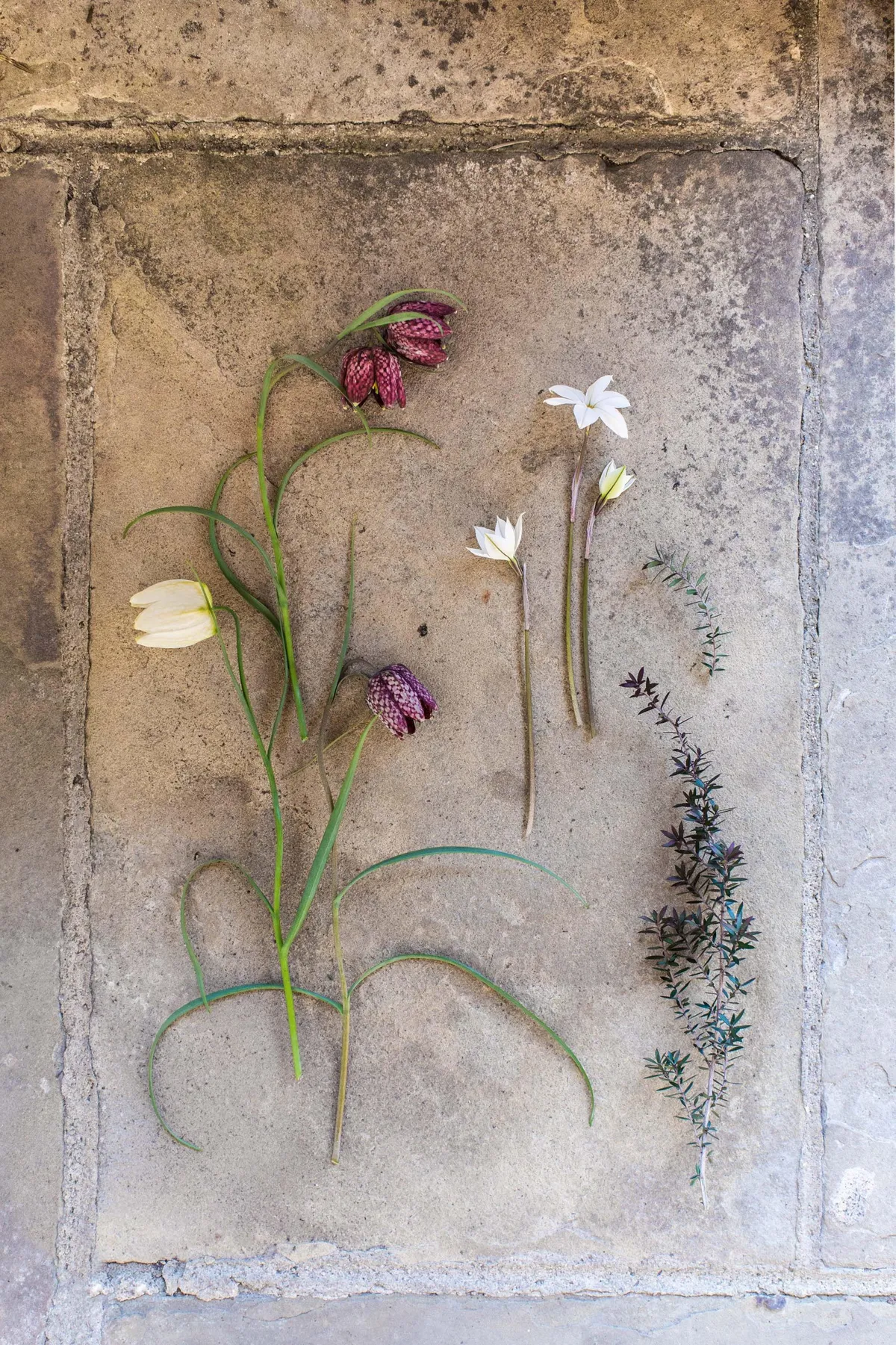Plants that remind me of my time in New Zealand always create a deep feeling of nostalgia. None more so than the dense copses of Leptospermum scoparium that used to grow on the hill farm where I lived.
Here I’ve used the cultivar ‘Red Damask’ to stoke those fond memories. Grown for its bristly, rouge-tinted, evergreen foliage, it provides a perfect backdrop for white starflowers and nodding snake’s head fritillaries, before going on to bloom in early summer.
How to achieve the look
Antique kitchenware, such as this old copper cooking pot, can easily be acquired in vintage shops for a modest sum and they are a good alternative to traditional terracotta pots. The deep-red foliage of the Leptospermum and pendulous pink heads of Fritillaria meleagris complement the dark, metallic planter, while bright white Ipheion ‘Alberto Castillo’ and the white fritillary brighten the combination and draw the eye. Plant the Leptospermum towards the back of the pot and the Ipheion towards the front, so they won’t get lost among the dense foliage. The taller Fritillaria can be planted evenly throughout and will push through and nod peacefully above the others.
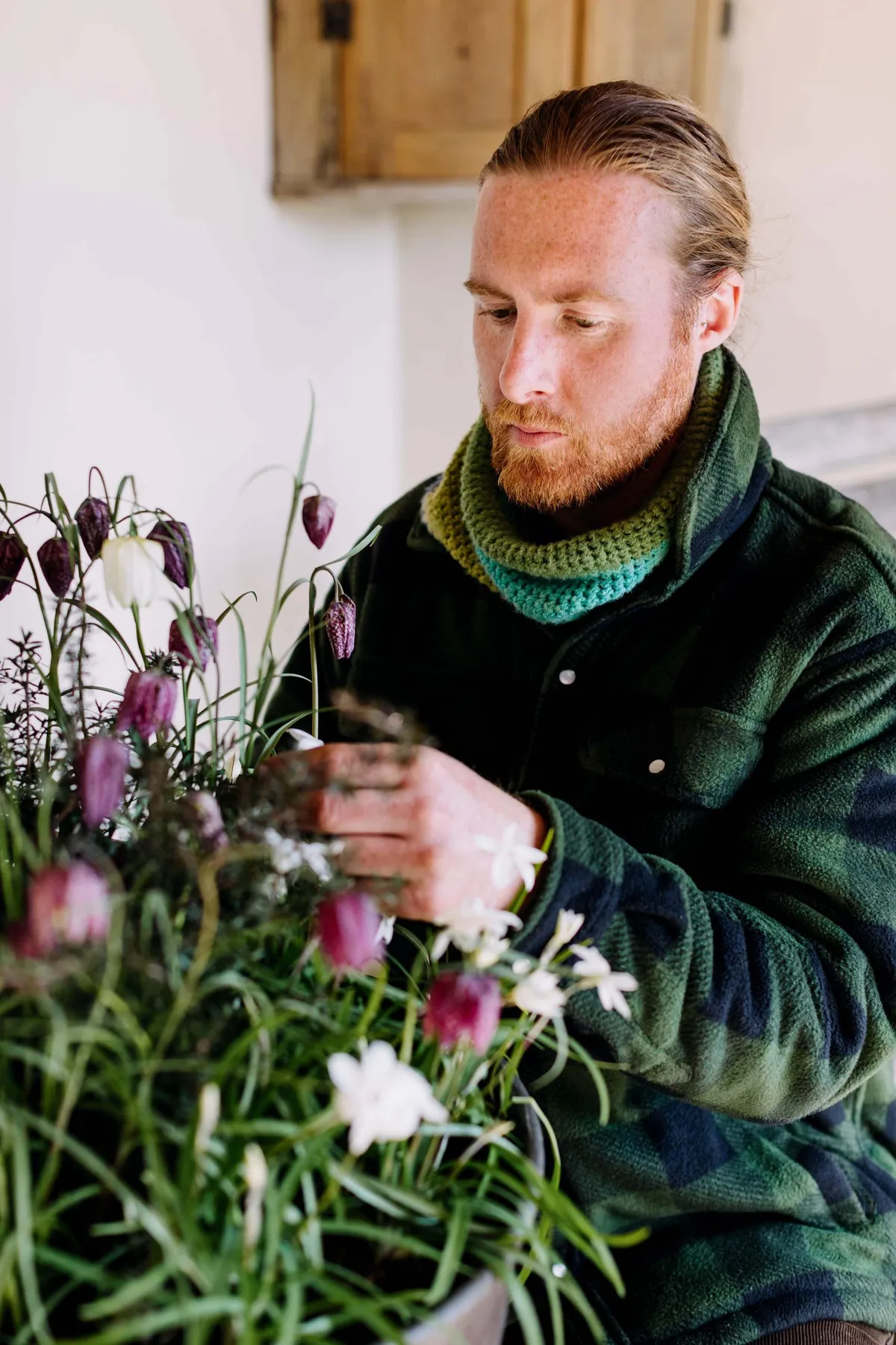
Plants
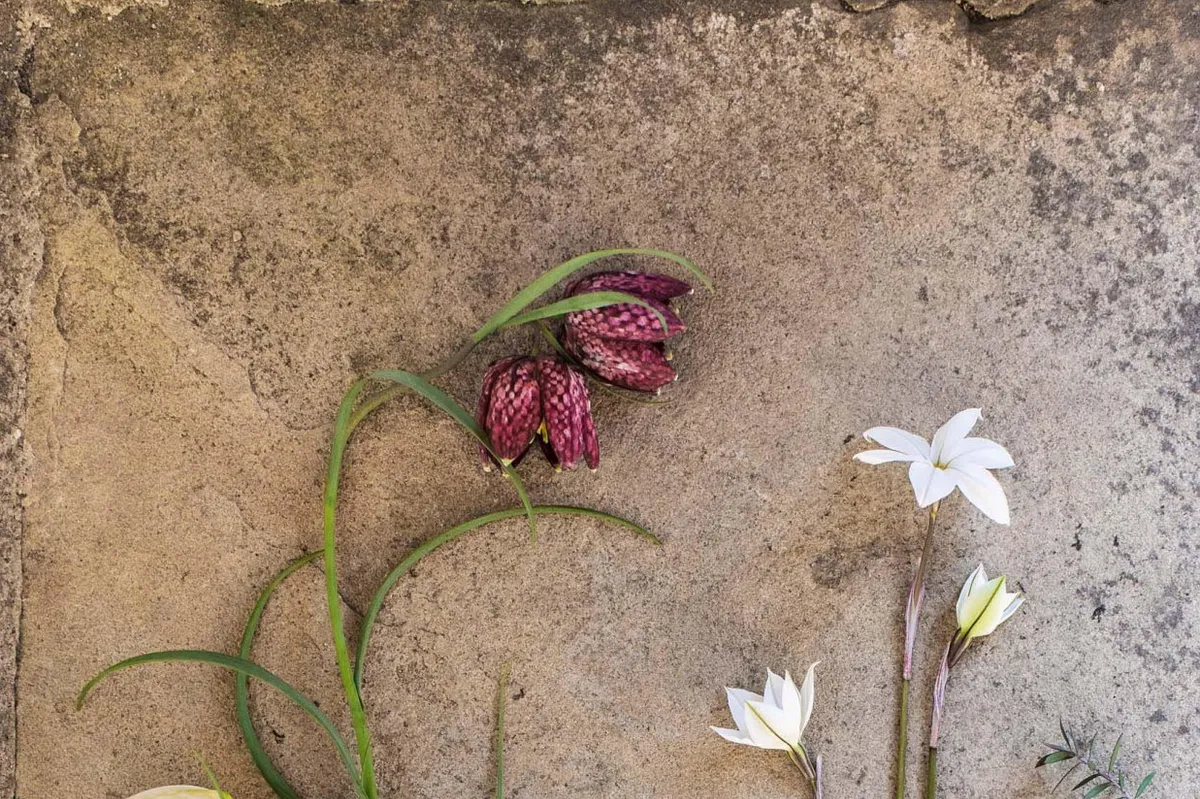
Fritillaria meleagris A mix of pink species and white Fritillaria meleagris subvar. alba. Prefers a moist spot in light shade. 30cm. AGM. RHS H5, USDA 3a-8b.
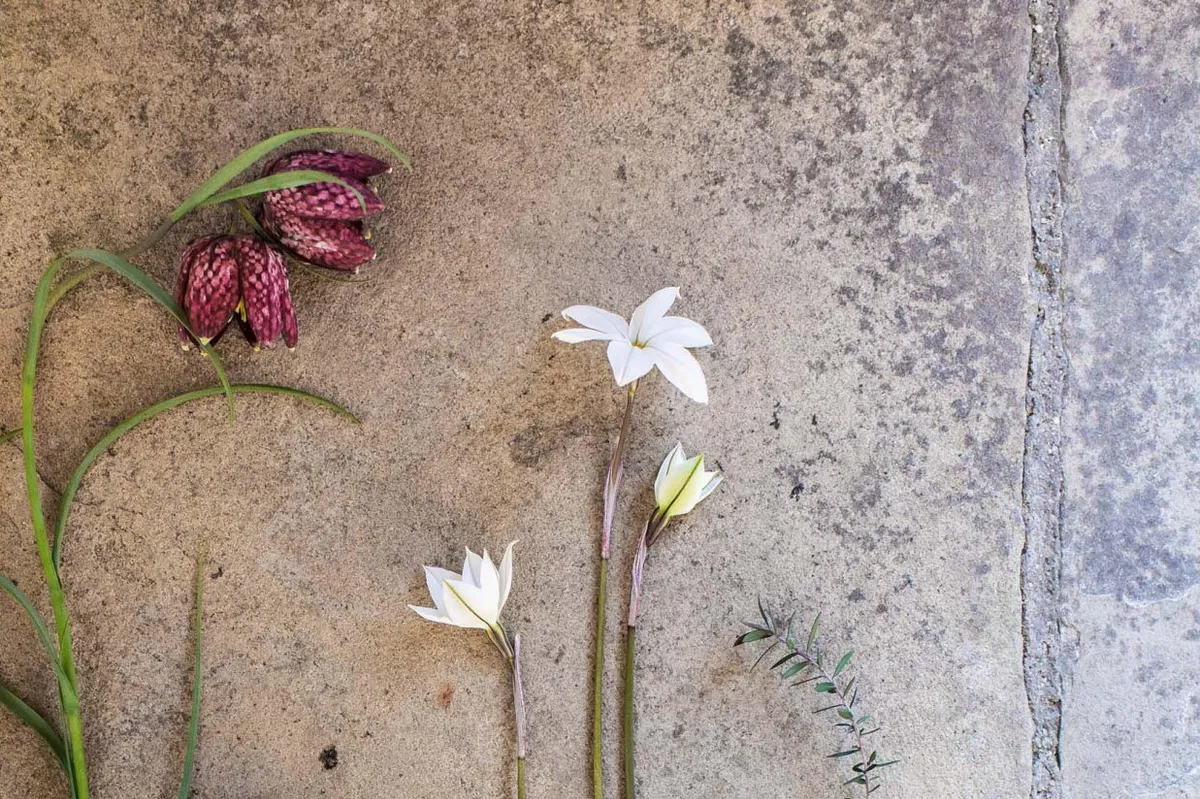
Ipheion ‘Alberto Castillo’ Long blooming bulbous perennial with white star-shaped flowers that appear in late winter to early spring. 15cm. AGM. RHS H5, USDA 5a-9b.
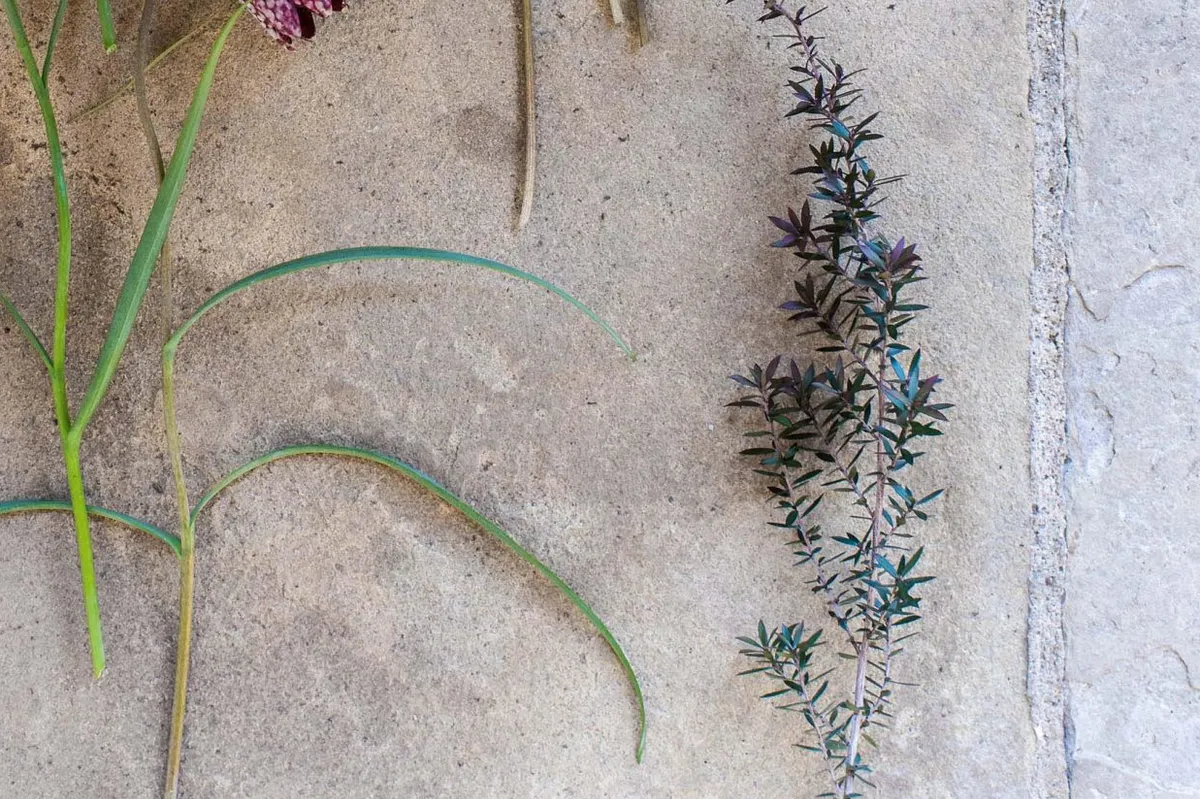
Leptospermum scoparium ‘Red Damask’ Dense, medium-sized shrub or small tree. Narrow, evergreen foliage held on red stems. Double, deep-red flower in early summer. 2.5m. RHS H4, USDA 9a-10b.
Cultivation and care
Container displays are a great way to try out new plants that you intend to use in the garden, and while they’re providing temporary additions to pot displays they can create a useful stage to show off seasonal treasures. And finding creative spaces to situate pots is also part of the fun – this one currently sits perfectly on a tree stump, showing off its displays at eye level. Once the bulbs have finished flowering and die back, the Leptospermum will produce a mass of deep-red double flowers in early summer, giving this display a long season of interest. I haven’t yet decided where I’m going to place the Leptospermum in its long-term home, but while I decide it will probably be much happier in a bigger pot.
